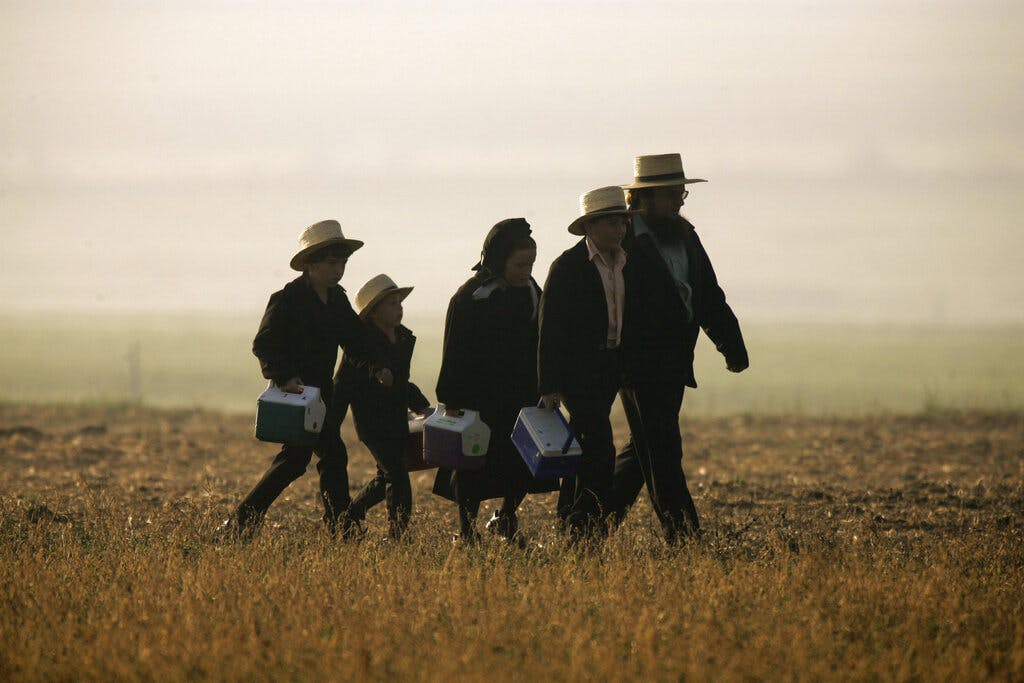How a Precedent Won for the Amish Could Protect Chasidic Jews
New York has launched a campaign intended to regulate the religious free exercise of chasidic yeshivas and establish that state education mandates outrank America’s Bill of Rights.

The chasidic community in New York is weighing its options in the wake of the decision of the state Regents to try to enforce in even the most fundamentalist of the state’s yeshivas rules requiring them to teach profane subjects. That’s the word from Assemblyman Simcha Eichenstein, who scooped the New York Times on its own investigation of the yeshivas. The Regents just voted unanimously to move against the schools.
We don’t mind saying that we look forward to the prospect of a constitutional struggle. The Regents board is trying to represent that its enforcement efforts will target all private schools, regardless of their religion. That, in our opinion, is poppycock. This is a campaign intended to regulate the religious free exercise of the chasidic yeshivas and establish that the state education mandates outrank America’s Bill of Rights.
This is a most meaningful moment to mull a case known as Wisconsin v. Yoder,* which the Supreme Court decided in 1972. It centered on the Amish practice of removing children from public education at age 14, in defiance of Wisconsin law. So God-fearing are the Amish that they refuse to fight even in court. Their cause, though, was taken up by a Lutheran clergyman,** who gained a unanimous victory from the Nine.***
It appears, at least to us, that when Chief Justice Burger wrote the — again, unanimous — opinion, he dipped his quill in a well still filled with the ink of the Founders. He scrawled out a clarion call in defense of the liberty of a religious minority group. He wrote that the Amish parents believed “that their children’s attendance at high school, public or private, was contrary to the Amish religion and way of life.”
Burger concluded that the Amish feared high school would “endanger their own salvation and that of their children.” They feared God. Burger pointed to Amish beliefs “deemphasizing material success, rejecting the competitive spirit, and seeking to insulate themselves from the modern world.” He marked their view that “salvation requires life in a church community separate and apart from the world and worldly influence.”
The Amish “objection to formal education,” Burger decided, “is firmly grounded in these central religious concepts.” Which meant that Wisconsin’s law was invalid under the Constitution because it forced the Amish “to perform acts undeniably at odds with fundamental tenets of their religious beliefs.” That is, the religious free exercise rights of the Amish trumped the desire of the state to require a high school education.
What, though, of the state’s argument that, pace Jefferson and as Burger put it, “some degree of education is necessary to prepare citizens to participate effectively and intelligently in our open political system”? This resonates today in New York, as William Galston notes in the Wall Street Journal. Yoder concedes that regulations “may be necessary” if the “goal is the preparation of the child for life in modern society as the majority live.”
We’d be wary of relying on that. For it is decidedly not the goal of the Amish — or the chasids — to prepare their children for life as the majority live. Burger may have noted that the Amish are “productive and very law-abiding members of society; they reject public welfare in any of its usual modern forms.” Yet he also noted that different standards apply if the goal is preparing a child for life in a separate religious community.
In short, the freedom that the Supreme Court vouchsafed for the Amish of Wisconsin arises from facts that are analogous to those of the fundamentalist chasidic community the Regents of New York find so offensive. The First Amendment just does not say that Congress may pass no law abridging the freedom of religion — unless it’s okay with the Board of Regents of the State of New York.
_______________
* Jonas Yoder, one of three students on whose behalf the case was brought.
* * The Reverend William Lindholm, who formed the National Committee for Amish Religious Freedom.
* * * The vote was seven to zero, Justices Wm. Rehnquist and Lewis Powell having recused themselves. Justice Wm. Douglas dissented on one aspect of the case but sided with the court on Yoder’s claims.

